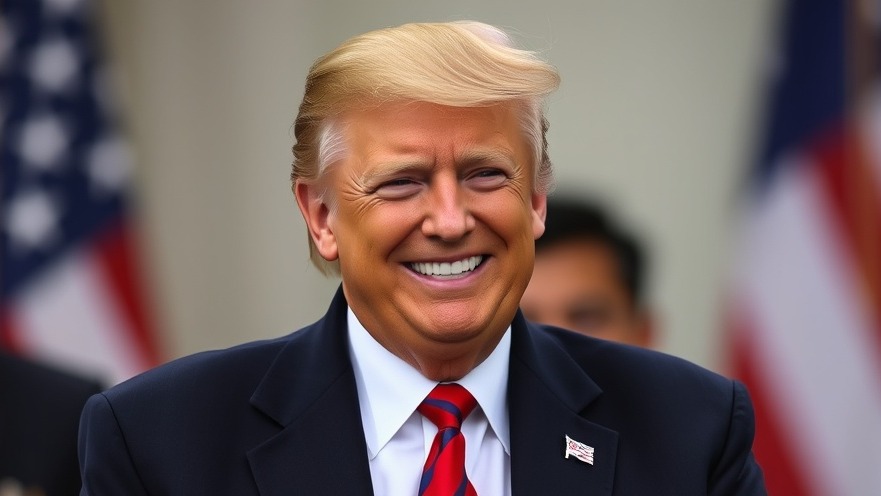
The Unveiling of Higher Tariffs: A Significant Shift in U.S. Trade Policy
On August 1, 2025, President Trump made headlines by announcing higher tariffs on over 60 trading partners, including nations with which the U.S. had previously secured trade agreements. This development comes after weeks of speculation and negotiation, as the administration plotted a strategic approach to international trade amidst deficit concerns and the ongoing push for improved economic agreements. The tariffs, scheduled to go into effect shortly, range dramatically, with Syria and Laos facing duties of 41% and 40%, respectively. Conversely, most imports will see tariffs of at least 10%. This sweeping strategy galvanizes debates within economic and political spheres regarding the immediate and long-term impacts on both the U.S. economy and global trade relations.
Understanding the Tariff Structure: Why It Matters
The executive order laid out by Trump categorizes countries based on trade relationships. Nations where the U.S. enjoys a trade surplus will incur a modest 10% tariff, while those with small deficits will face 15% tariffs. This tiered structure aims not only to penalize countries with unfavorable trade balances but also to stimulate U.S. production. Countries with larger deficits could see much higher tariffs, which do not bode well for future trade opportunities. For instance, on a global scale, tariffs against Canada will escalate from 25% to 35%, showing the U.S.'s aggressive posture even towards its primary partners, which may have broader implications for North American trade relations.
The Impacts on Global Trade: A New Era?
As these new tariffs take effect, the economic landscape will shift significantly. Businesses that rely on imports may find costs increasing, which could ultimately lead to higher prices for consumers. Greg Daco, chief economist at EY-Parthenon, emphasized, “The cost of doing trade tomorrow will be higher than it is today.” Such a shift raises pertinent questions about inflation and market volatility. The move may spur companies to reconsider their supply chain strategies, potentially emphasizing domestic production at the expense of global partnerships.
Domestic Implications: Will American Consumers Bear the Burden?
While the intention behind higher tariffs might be to strengthen the U.S. economy, the repercussions for American consumers could be detrimental. Increased tariffs typically lead to higher prices for imported goods, which essentially means consumers may end up paying more at retail. Moreover, industries heavily reliant on imports for raw materials may see profit margins shrink or even face operational challenges, leading to job cuts. Public sentiment regarding these tariffs could potentially sway consumer behavior, as the balance of pro-American manufacturing and consumer costs finds itself in tension.
Future Predictions: How Will Trade Relations Evolve?
Experts predict that the trade landscape will continue to evolve rapidly, with potential retaliatory measures from affected countries likely on the horizon. As nations respond to these tariffs, we could witness a shift in global alliances and economic strategies. Countries may seek new partnerships or leverage alternative trade deals, impacting the dynamics in regions like Asia and Europe. Additionally, as Trump’s administration pushes for significant trade reforms, ongoing negotiations and their outcomes will shape not just the tariffs but also the associated international relations for years to come.
Conclusion: The Importance of Staying Informed
As events continue to unfold, it’s crucial for consumers and businesses to stay updated on changes in trade policy that may affect the economy. Understanding the implications of these tariffs provides a clearer picture of the present and future landscape of trade in America. Keeping an eye on developments, both domestically and internationally, empowers all of us to make informed decisions in our personal and professional lives.
 Add Element
Add Element  Add Row
Add Row 



Write A Comment